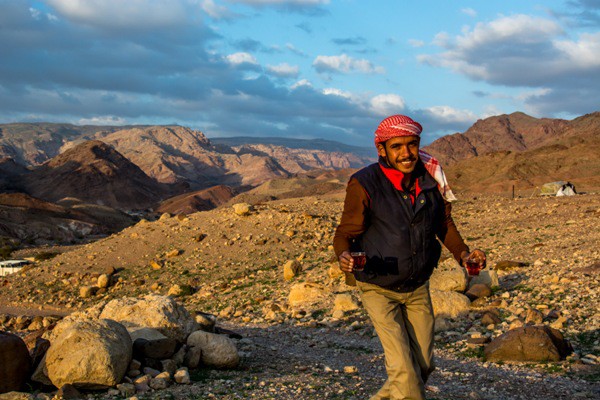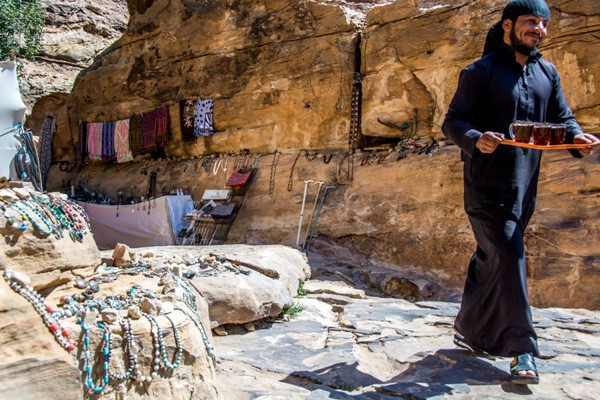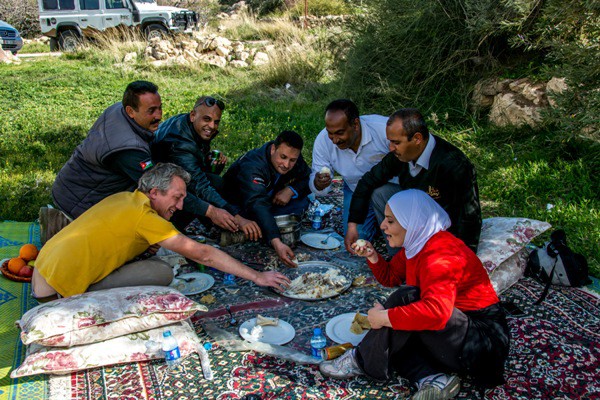
This is the final post of the Digital Nomad series with National Geographic Traveller.
Our two weeks in Jordan flew by in a highly enjoyable blur. Our Digital Nomad trip was hosted by the Aqaba Special Economic Zone Authority (ASEZA), and through our experiences they wanted to communicate three main messages to an international audience: that Jordan is a safe destination to visit; that Aqaba is a city which offers a variety of attractions which can appeal to many types of traveller; and that Aqaba’s position in the south of Jordan makes it a good base to use for exploring the country’s most famous sites: Petra, Wadi Rum and the Dead Sea.
So let’s take these in turn. All I can say is that Jordan felt very safe to us, and the security concerns we heard time and time again before we left the UK disappeared to the back of our minds pretty much as soon as we arrived, and never resurfaced during our two-week stay.
We enjoyed exploring Aqaba as a city, and while its attractions (for now) may be modest in comparison with those of major beach resorts on the Mediterranean, there’s enough on offer to entice visitors to get away from the hotel pool or beach and explore something different on every day of a typical holiday. The coral reef off the shore is easily accessible and offers good diving opportunities, as we discovered on our beginners’ diving lesson; snorkelling is also possible over the reef just by swimming from the beach. There is a mini-fleet of glass-bottomed boats around Aqaba waiting for customers to roll up, and at the upmarket Tala Bay to the south of the city we took a ride in a ‘submarine’ boat, which allows you to see a submerged military tank and a scuttled ship without the trouble of getting wet.
We enjoyed strolling through the centre of Aqaba, especially in the cooler evenings. On Friday evening we spent a hour or so at the Souk by the Sea, where there’s live music, food and handicrafts. The main streets in the downtown area have a lively, easy-going vibe, and there’s plenty of very affordable, traditional Middle Eastern food in the town’s cafes and restaurants.
Aqaba is due to expand dramatically in the next few years, along with a massive boost in its range of tourism facilities . The Saraya, Ayla and Maabar mega-projects currently under construction will bring luxury hotels and swanky seafront apartment blocks aimed at affluent foreign buyers, as well as a golf course, a water park and a convention centre. The aim is to transform Aqaba into a major international destination for all budgets and for all types of visitor. These hugely ambitious developments will almost certainly attract a new breed of visitor to come to the Jordanian Red Sea coast. I hope that in doing so, they don’t diminish Aqaba’s current more traditional appeal, even if this is not quite as glamorous or lucrative as that offered by the grand new plans.

As for Aqaba serving as a gateway to Jordan’s major attractions, the coast offers a more convenient base than Amman for exploring Wadi Rum and Petra, with both places an easily doable day trip away. That said, I would strongly recommend visitors to Jordan to stay overnight and experience the magic of the desert in Wadi Rum, and to book a night or two near Petra too, so that they can explore the site over at least 2 days; there’s the thrice-weekly Petra by Night, as well as several great hikes to do in and around Petra.
We ventured up as far as the Dead Sea, and while it’s possible to visit the Dead Sea from Aqaba in a day, it’s a long 3-hour drive, leaving just about enough time for a swim and a natural mud bath before heading back south; again, an overnight trip would mean two relatively easy days on the road and more time to relax at the lowest point on Earth.
Throw in a spot of diving, other water sports, or just some time lazing on the beach, and Aqaba provides an attractive base for a Jordan holiday. At the moment the most convenient way to fly in is via Istanbul on Turkish Airlines, who offer the only international scheduled flights to Aqaba. I found the flights pretty comfortable, although the late-night flight times aren’t ideal. The food is ok and having a movies on-demand service for a European flight is a definite bonus. A major advantage of flying into Aqaba rather than into Amman is that the Jordanian visa fee, currently 40 JD (£38), is waived.

Wadi Rum and Petra are Jordan’s two best-known attractions, and there’s plenty to experience beyond these headline acts. Our 3-day hike from Dana to Petra was a personal highlight, with an ever-changing series of dramatic landscapes more than compensating for the sore limbs along the way. We tried our hand at abseiling for the first time and lived to tell the tale. And our various encounters with Jordanian food, sometimes cooking but always eating, were always a pleasure.
Above all else, the single factor running through all of our encounters in Jordan was the warm hospitality we experienced. Thankfully we’ve been to Jordan before so we knew it wasn’t just because we were there as guests of ASEZA, or on a project which involved the National Geographic name; we had enjoyed exactly the same welcome and friendliness on our previous visit, back in the days when I had ‘a real job’ and we were ordinary tourists. From the Bedouin who called us over for tea as we were hiking, to the strangers who would call out to us to let us know how welcome we were, to those we dealt with directly as part of our project who left a lasting impression on us with their kindness, it is the people in Jordan that would give us the greatest reason to return. Genuine hospitality is perhaps the easiest ingredient to market; and the hardest.

You can find six other posts from the Digital Nomad project on the National Geographic Traveller website.




